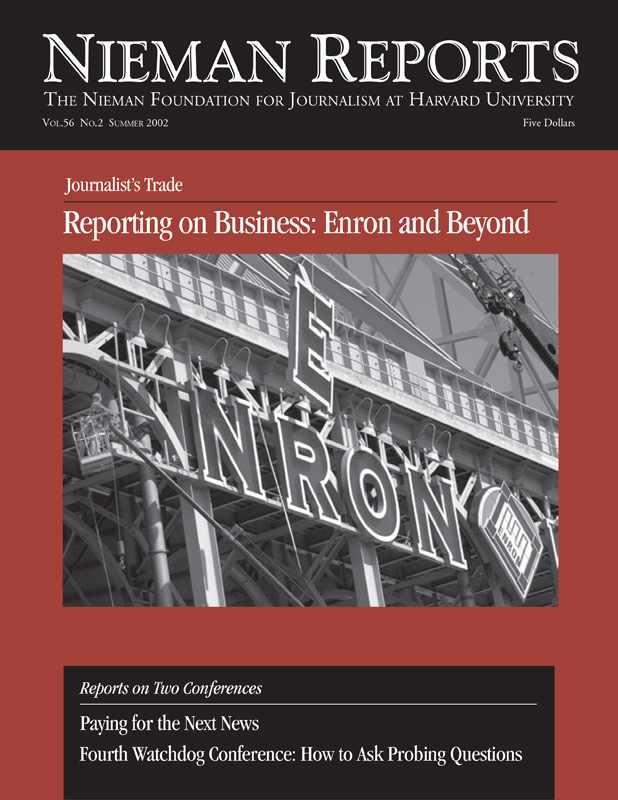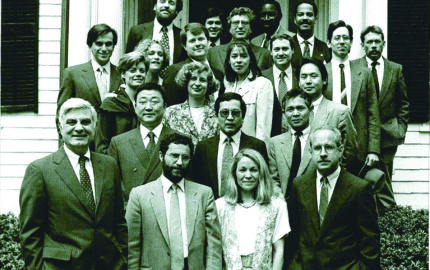When the Nieman Foundation announced an award for fairness in newspapers more than a year ago, we understood there would be a bit of skepticism about the need for still another journalism prize. Yet we were confident that journalism’s continuing quest for fairness could be well served by a competition that brought forth stories in which individual journalists and their news organizations demonstrated how to be fair.
As the winner of the Taylor Family Award for Fairness in Newspapers and three finalists gathered at Harvard recently for the award presentation and a discussion of the stories being honored, it was reassuring to understand that fairness remains a powerful aspiration in journalism and that a competition to recognize fairness can have an impact.
Two particular themes emerged from stories in four newspapers that were honored for fairness:
- Newspapers risk credibility when they publish anonymously sourced information in stories about murder and other serious crimes. Story after story demonstrated how police and prosecutors use journalists by leaking information as they build cases against criminal suspects. Reporters accept the information willingly, only to learn later that murder investigations were bungled or confessions were illegally coerced.
- Newspapers are fair in giving voice to those who have none or whom society would not be inclined to believe.
Les Gura of The Hartford Courant, winner of the first Taylor Family Award for Fairness in Newspapers, wrote a meticulous account of how New Haven police bungled the murder investigation of a Yale student and unfairly implicated a promising young instructor at the university.
Gura’s account was unsparing in its examination of how his newspaper and other local news media played the story. Once police anonymously identified the instructor, James Van de Velde, as a suspect—no other suspect was ever named—the story became one of a coed-teacher scandal. This angle drew national attention; the university canceled his classes, and then refused to renew his contract. “So much of Van de Velde’s reputation had been shattered because of the use of anonymous sources,” Gura said, “I decided only to use people who agreed to go on the record in the story.” Gura’s story draws no conclusion; instead, it asks questions and forces the reader to think and to decide whether Van de Velde was treated fairly.
The (Baltimore) Sun and the Chicago Tribune were recognized for examples of fairness in stories that also exposed abuses of police and prosecutorial power. The Sun examined the verdict of a Baltimore jury that acquitted a teenager for killing a police officer—and enraged the community. Sun reporters John O’Donnell and Jim Haner talked to six jurors who acknowledged the jury thought the 17-year-old defendant had caused the officer’s death, but they had no choice but to let him go. The reason was an increasing willingness among urban jurors, particularly African Americans, to acquit defendants they believe are guilty if they detect any abuse of police power. One of the fairness award judges observed that this story could be read “by all sides, allowing a very revealing story to be told without any sense of bias or unfairness distracting readers from the reporting.”
The Chicago Tribune, in a four-part series, disclosed staggering evidence of the abuse of power by police investigators in obtaining false and often illegal confessions, many of them from young black men. The stories were praised for bringing fairness to a group of men who otherwise might never have known it in a society that is inclined not to believe them. One of the detectives at the center of many of the cases was shielded by police officials from talking to Tribune reporters. The paper was able to reconstruct the detective’s side through court documents recording his testimony about his role in the investigations and his philosophical views about police and defendants. This lengthy passage about the detective stood out as a singular example of fairness.
The (New Orleans) Times-Picayune series reported on how a government program to help disadvantaged minority-owned businesses was, instead, enriching wealthy entrepreneurs. The newspaper was cited for its sensitivity in examining problems in a federal program that was popular with the city’s residents by suggesting effective remedies and giving value to concerns of people not often heard from.
The Nieman Foundation and the Taylor family, which published The Boston Globe for five generations, began this award with no particular definition of fairness in mind, believing that the entries would build a valuable archive of how fairness is being practiced in the nation’s newsrooms and how leading journalists define it. In this way, the award can become an important resource in helping journalists and the public understand the broad, complex and serious nature of fairness in newspaper journalism.



